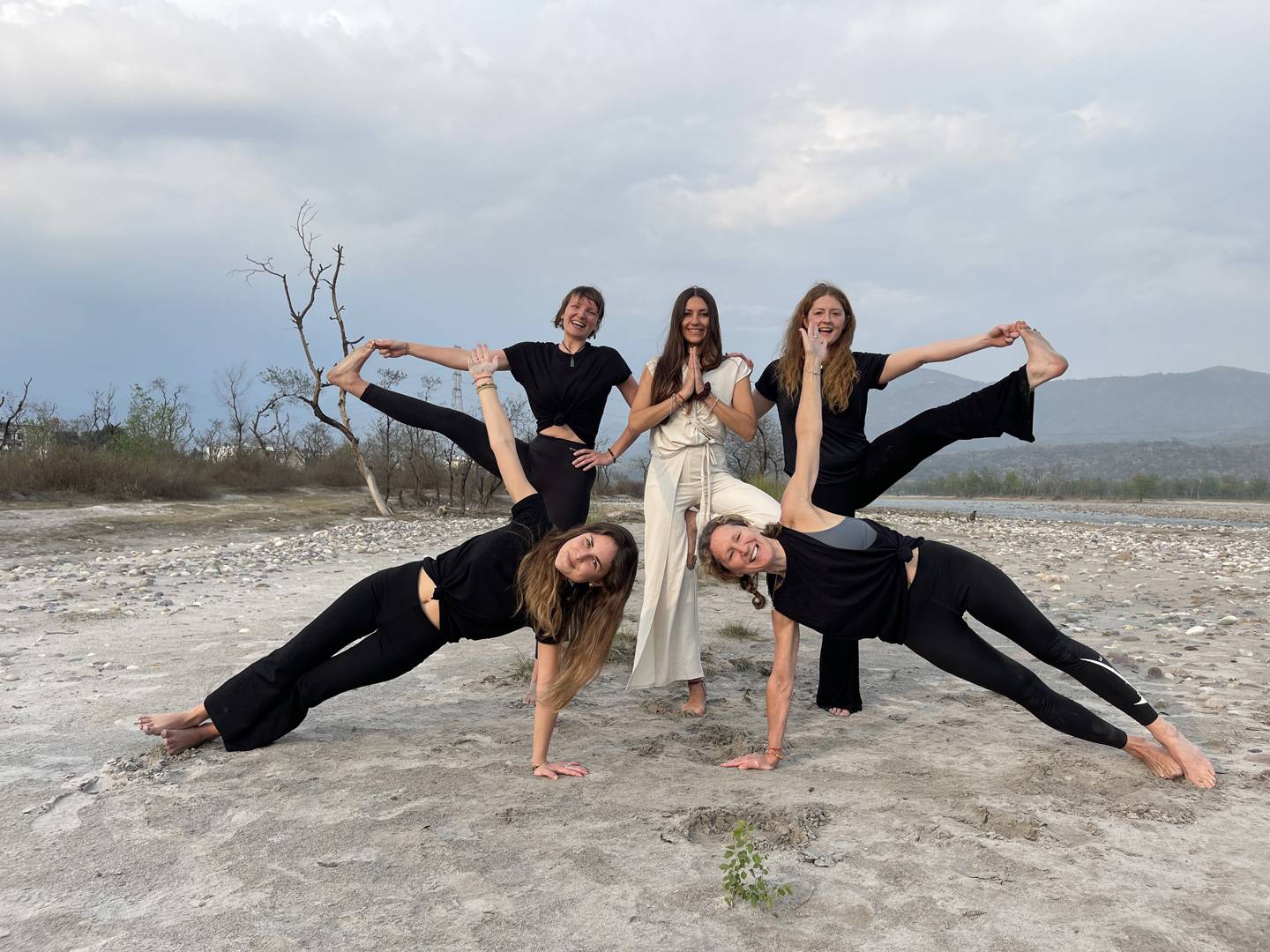
In the winter , some people have increased nervousness, mood swings or feeling heavier in their body and mind. Less sunlight lowers serotonin levels, colder temperature leads to a tightening of the body and slower-moving lifestyle can lead to more rumination. Consequently, the autonomic nervous system is exposed to more stimuli, which in turn causes symptoms that can be associated with anxiety.
Yoga—especially backbends, heart openers, and pranayama—offers a powerful antidote to combat these imbalances. They are, in reality, physical antidotes to winter’s close-in-ness that massage lungs and respiration muscles open, unblock circulation and engage the parasympathetic nervous system of our bodies (you know: the one that makes you chill.)
Here you’ll get science-backed explanations, practical tips and expert insight for making yoga a natural way to decrease your winter anxiety.
How Winter Affects Anxiety Levels (Backed by Research)
- Less sunlight means less serotonin, the neurotransmitter associated with mood Balance
- Muscles tighten & start shutting down with cold
- Shallow breathing due to the cold
- Shorter days mess with your circadian rhythm, so you don’t get such a good quality sleep
- Sedentary lifestyle limits mobility and the natural release of endorphins
- Forward-hunch posture (common in winter) crushes the diaphragm and prevents complete inhalation
As the breath becomes shallow, the brain translates it to mean stress. The sympathetic nervous system is activated (fight-and-flight mode), and anxiety increases.
Here is where yoga becomes not just physical but also therapeutic.
Why Backbends Reduce Anxiety: A Nervous System Perspective
Backbends are proven to:
- I stretched the intercostal muscles of my ribcage, giving my lungs space to expand more fully.
- Elevate the absorption of oxygen into the brain[Byte]
- Excite the spinal nerves and make the energy free flow.
- Chest Openers to Combat Winter’s Hunched Posture
- Increase heart-opening hormones like oxytocin
Backbends also produce a neuro-emotional release by opening the space around the heart and diaphragm (areas associated with emotional stress).
Expert-Level Benefits of Key Backbends
1. Bhujangasana (Cobra Pose)
- Activates thoracic extensors, reversing slouching posture
- Improves spinal health, reducing stress-induced stiffness
- Helps release adrenal tension (linked to anxiety)
How to Perform Safely:
- On your stomach with your toes tucked behind you and the tops of them pressing against the floor. You can let your forehead rest softly on the mat.
- With your legs close together, let your feet and heels kiss gently.
- Put your hands on the floor by your chest hugging in with elbows close and parallel to torso.
- Take a deep breath, and then start to lift your head, chest, and upper belly off the floor keeping your stomach on the ground.
- Evenly press into both of your palms and bring your chest up, as you lift spine, vertebra by vertebra, while arching the back.
- If it feels good, bring your arms straight and deepen the backbend, tipping your head backward slightly to look up.
- Remain in position for 4 to 5 slow, deep breaths.
- Exhale and gradually lower your chest, belly, and head back down onto the floor. Relax completely.
- Repeat the posture 4–5 times.
2. Setu Bandhasana (Bridge Pose)
- Opens the anterior body (chest, hip flexors, abdomen)
- Stimulates the thyroid & endocrine system (balances mood hormones)
- Encourages smooth diaphragmatic breathing
Therapeutic Tip:
Place a block under the sacrum for a supported variation—excellent for anxiety and insomnia.
3. Ustrasana (Camel Pose)
- Deepens emotional release by stretching psoas & chest
- Increases circulation around the heart
- Encourages vulnerability and emotional openness
Safety Tip:
Lift through the sternum first, keep the hips over the knees, and avoid compressing the lower back.
Chest Openers for Emotional Expansion & Stress Relief
Chest openers target places where anxiety physically resides:
- Pectorals
- Diaphragm
- Upper back
- Intercostal muscles
These areas tighten under stress, reducing breath capacity.
Top Chest-Opening Poses for Winter Anxiety
Anahatasana (Heart Melting Pose)
- Gently stretches the chest and armpits
- Stimulates the vagus nerve for anxiety relief
- Calms the mind through grounding posture
Supported Matsyasana (Fish Pose)
Using a bolster creates:
- Gentle chest expansion
- Relaxation of the sympathetic nerves
- Emotional decompression
Wall Chest Stretch
A simple pose that releases years of tension caused by computer posture and winter hunching.
Deep Yogic Breathing: The Most Effective Anxiety Tool
Breathwork is not just calming—it physiologically changes the nervous system by:
- Lowering cortisol
- Reducing heart rate
- Stabilizing the vagus nerve
- Enhancing parasympathetic dominance
- Improving oxygen-rich blood flow to the brain
1. Dirgha Pranayama (Three-Part Breath)
Expert benefits:
- Improves respiratory volume
- Re-teaches the diaphragm how to expand
- Reduces panic by slowing exhalation
How to Do It:
Inhale into belly → ribs → chest, exhale from chest → ribs → belly.
2. Ujjayi Pranayama (Oceanic Breath)
Benefits:
- Generates inner warmth (important in winter)
- Increases focus and reduces mental chatter
- Supports safe back bending practice
3. Bhramari Pranayama (Humming Bee Breath)
Backed by research to:
- Instantly reduce anxiety levels
- Lower blood pressure
- Calm amygdala activity (fear centre of the brain)
The vibration stimulates the vagus nerve, helping shift the body into deep calm.
A Winter Yoga Routine for Anxiety Relief (Expert-Designed)
Duration: 20–25 minutes
Frequency: 4–5 times per week
Warm-up (5 minutes)
- Cat–Cow
- Shoulder rolls
- Gentle spinal twists
Main Practice (10–12 minutes)
- Cobra Pose – 3 rounds
- Bridge Pose – 8 breaths
- Camel Pose – 3–5 breaths
- Heart Melting Pose – 1 minute
- Supported Fish Pose – 2 minutes
Breathwork (5–7 minutes)
- 3 minutes Dirgha Pranayama
- 3 minutes Ujjayi or Bhramari
Savasana (3 minutes)
Cover yourself with a blanket to reduce winter chills and support the parasympathetic system.
Additional Yoga-Based Lifestyle Tips for Winter Anxiety
- Warm Oil Massage (Abhyanga)
Helps reduce Vata imbalance, which is closely associated with winter anxiety. - Morning Sun Exposure
Even 10 minutes boosts mood-regulating hormones. - Grounding Foods
Warm meals, root vegetables, ginger, nutmeg, and herbal teas support emotional balance. - Limit Screen Time Before Bed
Supports circadian rhythm and reduces stress hormones.
Conclusion: Yoga Creates Inner Warmth During Winter Anxiety
By stitching together backbends, chest openers and — you guessed it — yogic breathing, you re-train your nervous system to meet winter with ease instead of anxiety. These practices cultivates warmth, emotional resilience and internal stability —allowing you to navigate your way into the season with clarity and balance.
If you have a desire to take this practice further and learn why movement feels so good for us, how it unlocks our mind as much as our body, then seriously consider studying with me on a 200 hour Yoga teacher training in India with Yoga India Foundation.
This life-changing program prepares you to create strength, stability and wisdom in your body, mind and heart through yoga—ideal for those looking to grow personally or in their teaching.
